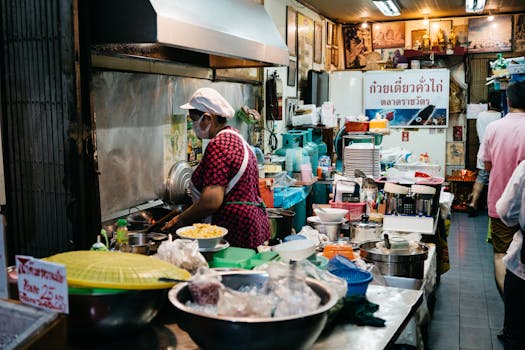
Culinary Adventures: Exploring Europe’s Food Scene in 2025 – WordPress
Culinary Adventures: Exploring Europe’s Food Scene in 2025 is an exciting topic that will take you on a gastronomic journey through the continent. Europe’s food scene is renowned for its diversity, richness, and innovation, with each country offering a unique culinary experience. In this article, we will delve into the latest trends, must-visit restaurants, and essential ingredients that will shape the European food landscape in 2025.
Introduction to Europe’s Food Scene
Europe’s culinary heritage is a reflection of its history, culture, and geography. From the Mediterranean diet to Nordic cuisine, each region boasts an array of traditional dishes, ingredients, and cooking techniques. The continent is home to some of the world’s most famous gastronomic destinations, including Italy, France, and Spain. In recent years, Europe has experienced a surge in food innovation, with the rise of plant-based cuisine, sustainable eating, and molecular gastronomy.
Trends Shaping Europe’s Food Scene in 2025
As we look to 2025, several trends are expected to dominate Europe’s food scene. These include:
- Sustainable eating: With growing concerns about climate change and environmental degradation, sustainable eating is becoming increasingly important. Expect to see more restaurants and food producers prioritizing locally sourced, organic, and zero-waste practices.
- Plant-based cuisine: Plant-based eating continues to gain popularity, with many European cities now offering a wide range of vegan and vegetarian options. From traditional dishes to innovative plant-based creations, this trend is set to continue.
- Molecular gastronomy: Molecular gastronomy, which applies scientific principles to cooking, is becoming more mainstream. Chefs are experimenting with new ingredients, techniques, and presentation styles, resulting in unique and exciting dining experiences.
- Food technology: Food technology is transforming the way we produce, distribute, and consume food. From vertical farming to meal kits, innovative solutions are emerging to address issues such as food waste, sustainability, and accessibility.
Must-Visit Restaurants in Europe
Europe is home to countless exceptional restaurants, each offering a unique culinary experience. Some must-visit destinations include:
- Noma (Copenhagen, Denmark): Renowned for its innovative Nordic cuisine, Noma is a pioneer of the New Nordic food movement.
- El Celler de Can Roca (Girona, Spain): This three-Michelin-starred restaurant is a masterclass in contemporary Catalan cuisine.
- Mirazur (Menton, France): With its stunning views of the Mediterranean, Mirazur serves up exquisite French-Italian cuisine.
- The Jane (Antwerp, Belgium): This Michelin-starred restaurant offers a unique dining experience, with a focus on local, seasonal ingredients.
Essential Ingredients in European Cuisine
European cuisine is characterized by an array of essential ingredients, including:
- Olives and olive oil: A staple in Mediterranean cuisine, olives and olive oil are used extensively in Greek, Italian, and Spanish cooking.
- Cheese: With over 1,000 types of cheese produced in Europe, this ingredient is a cornerstone of many national cuisines, including French, Italian, and Swiss.
- Bread: From crusty baguettes to hearty sourdough, bread is a fundamental component of European cuisine, often served as a side or used as a base for various dishes.
- Seafood: With its extensive coastline, Europe offers an incredible array of fresh seafood, including fish, shellfish, and crustaceans.
Conclusion
In conclusion, Europe’s food scene in 2025 is set to be shaped by a range of exciting trends, from sustainable eating to molecular gastronomy. With its rich culinary heritage, diverse ingredients, and innovative restaurants, Europe remains a paradise for foodies. Whether you’re a seasoned gourmet or just starting to explore the world of food, Europe has something to offer everyone.


